
The Venetian towers
Among the many remarkable sights on the island of Naxos are the Venetian fortified towers – evidence of a turbulent time. No other island in the Aegean has as many Venetian towers as Naxos.
After the Venetian crusader Marco Sanudo had conquered the island of Naxos in 1207, he divided it up among his 50 or so companions and appointed them feudal lords (he left the wealthier Greek landowners in their possession, and also put into use some areas that were not cultivated at the time). The Venetian feudal lords built fortified houses (“towers”) in the villages or on their estates, where they resided during the summer, while they spent the winter in their mansions in the Castro of Chóra.
The towers were originally built in such a way that they could be easily defended. Some towers had no windows or doors on the lowest floor; the windows were generally small. Other towers also had doors on the lower floor, but they only led to the workrooms located there without internal staircase access to the living quarters on the upper floors. In both cases, the entrance to the tower’s living quarters was on the second floor and could only be reached via a ladder or a bridge or a very steep, easily defended staircase.
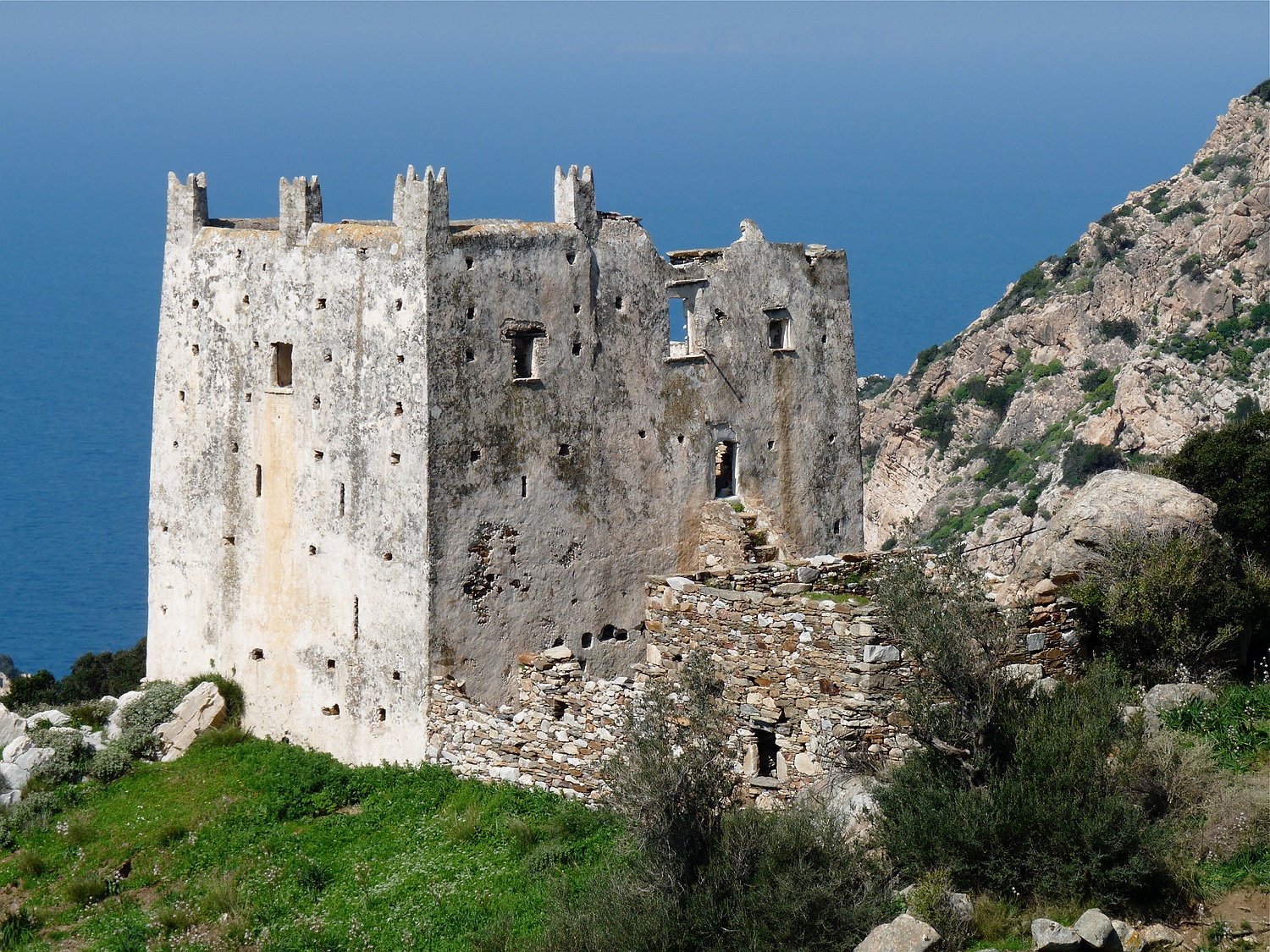
The Venetian tower of Agiá in the north of Naxos has no doors or windows on the lower floor, and the entrance on the second floor can only be reached via a very steep staircase.

At the tower in Chalkí, a large staircase separate from the tower leads up to the first floor; however, the entrance could only be reached via a retractable bridge. The porch at the window above the entrance was probably also used for defence purposes, e.g. for pouring down hot oil.
Most of today’s Venetian towers on the island do not date from this early period, but are more recent, especially from the 17th and 18th centuries, when the island was already under Ottoman rule. Many of the towers are now derelict; a few are still inhabited.
The tower of Kourounochóri
The oldest preserved Venetian tower on the island is located in Kourounochóri near Mélanes. It dates back to the 14th century and belonged to the family Sanudo, i.e. it was the country residence of the island’s duke. In 1383, the last duke of the family, Nicolo dalla Carcere, was murdered at this tower by Francis Crispi, who was subsequently appointed Duke of the Aegean. In the 19th century, the tower belonged to the aristocratic Greek family Frangopoulos from Constantinople, who had converted to the Catholic faith. When the Bavarian Prince Otto, who was appointed king after the liberation of Greece in 1833, visited the island of Naxos, he stayed in this tower.
Like all Venetian towers on the island, the tower in Kourounochóri was fortified and originally had no windows or doors on the ground floor. The entrance on the second floor could only be reached via a steep staircase or a drawbridge; raised walls on the roof and walled projections in the middle of the sides, from which large stones could be thrown down, were used for defence. The turrets on the roof are characteristic of the Venetian towers of Naxos.
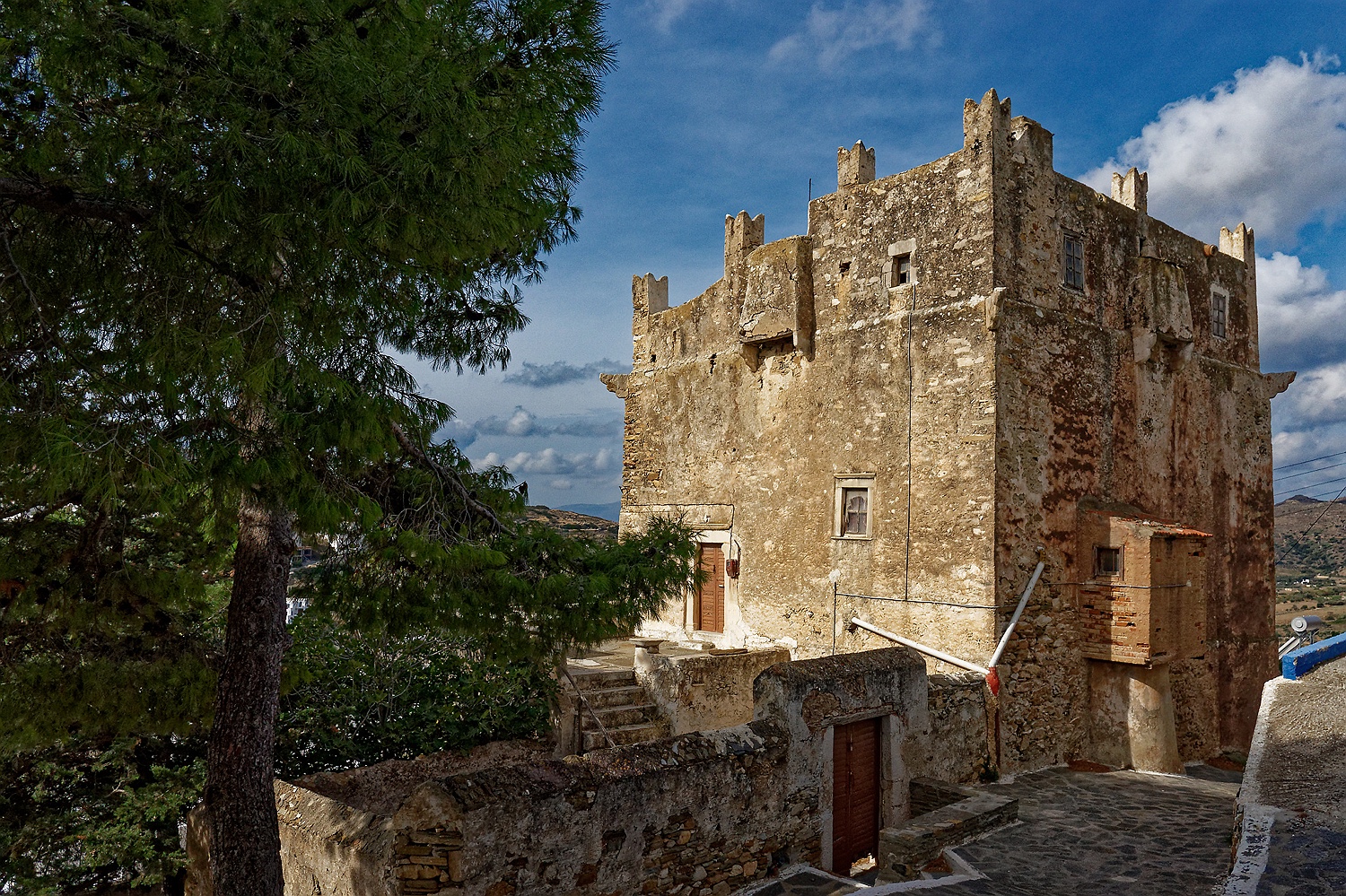
This tower in Kourounochóri, which is no longer in use, dates back to the 14th century and is the oldest surviving Venetian tower on the island (photo by Dieter Linde).
The history of the family Kókkos
Several defence towers on the island belonged to the Greek family Kókkos. Konstantinos Kokkos, the most famous member of the family, was very politically active and was appointed as a representative of the villagers and a judge. He campaigned tirelessly for the rights of the poor Greek peasants. In 1670 and 1681, he led two uprisings against the feudal lords. This naturally made him extremely unpopular among the Venetians, which ended with him being brutally murdered in 1687. The murder was committed by Francis Barozzi, who, together with several other Catholic noblemen, lay in wait and attacked him as he returned to Chora from some errand. The representatives of the island’s villages and the Burgos neighbourhood sent a long letter to the admiral of the Venetian fleet, signed by many priests and citizens of the island, requesting that this murder of the highly esteemed Naxiot leader be punished, if only to prevent further hostilities, but to no avail. The Venetian fleet was still active in the Cyclades at this time, constantly striving for naval supremacy in the Aegean against the Ottoman fleet; some five years earlier, the Venetians had briefly recaptured the island of Naxos, hoping to restore the Duchy of the Aegean, but had soon lost it again to the Ottomans.
Two years later, the followers of Konstantinos Kokkos took revenge for the murder by murdering the father-in-law of Francis Barozzi, Chrousis Coronello, who was said to have instigated the crime, at Kaloxylos. This led to a bitter feud between the two families. The Kokkos family retreated to the fortified monastery of Ypsilotéras near Galíni (near Engarés), which had been built by Konstantinos Kokkos in 1660 and where his son Ambrosios was now abbot. A few days after the murder of Coronello, the enraged Catholics of Naxos instigated the pirate Reimond de Modene, whose frigate was anchoured in the harbour, to attack the fortified monastery of Ypsilotéras together with leaders of the Catholic feudal lords under Jakob Coronello, the son of the murdered man. After a siege lasting several days, which cost the lives of several inhabitants of the monastery, the defenders managed to escape secretly during the night. They left behind Konstantinos Kokkos’ then four-year-old daughter, fearing that the child would betray them by crying; they hoped that the attackers would not harm the child. They did indeed take the girl with them, and she seems to have lived in Chóra at least for a while and is said to have been brought up in the Catholic faith.
The renewed bloodshed brought the events to the attention of the Venetian admiralty, who arrested both the abbot Ambrosios Kokkos and two of his companions as well as the Naxiot leader of the attackers, Jakob Coronello. Only much later, after further bloodshed, did the Capuchins of the Chóra succeed in reconciling the Catholic and Orthodox churches of the island, which had become bitter enemies as a result of the events. To finally put an end to the bloody feud, the families of Kokkos and Barozzi agreed to marry their children, and little Annoúsa was promised to the son of Francis Barozzi. According to local tradition, this son, called Tsabatís, fell madly in love with the beautiful Annoúsa, whom he saw in the family’s tower near Potamiá, and she returned the love of the handsome young man, with the result that he kidnapped her and the two married against the wishes of their families, thus ending their enmity. They lived in the Barozzi’s fortified tower in Chalkí, which was long known as the ‘Tower of Annoúsa’, while Annoúsa’s mother, Konstantinos’ widow, lived in the tower near Potamiá until her death.
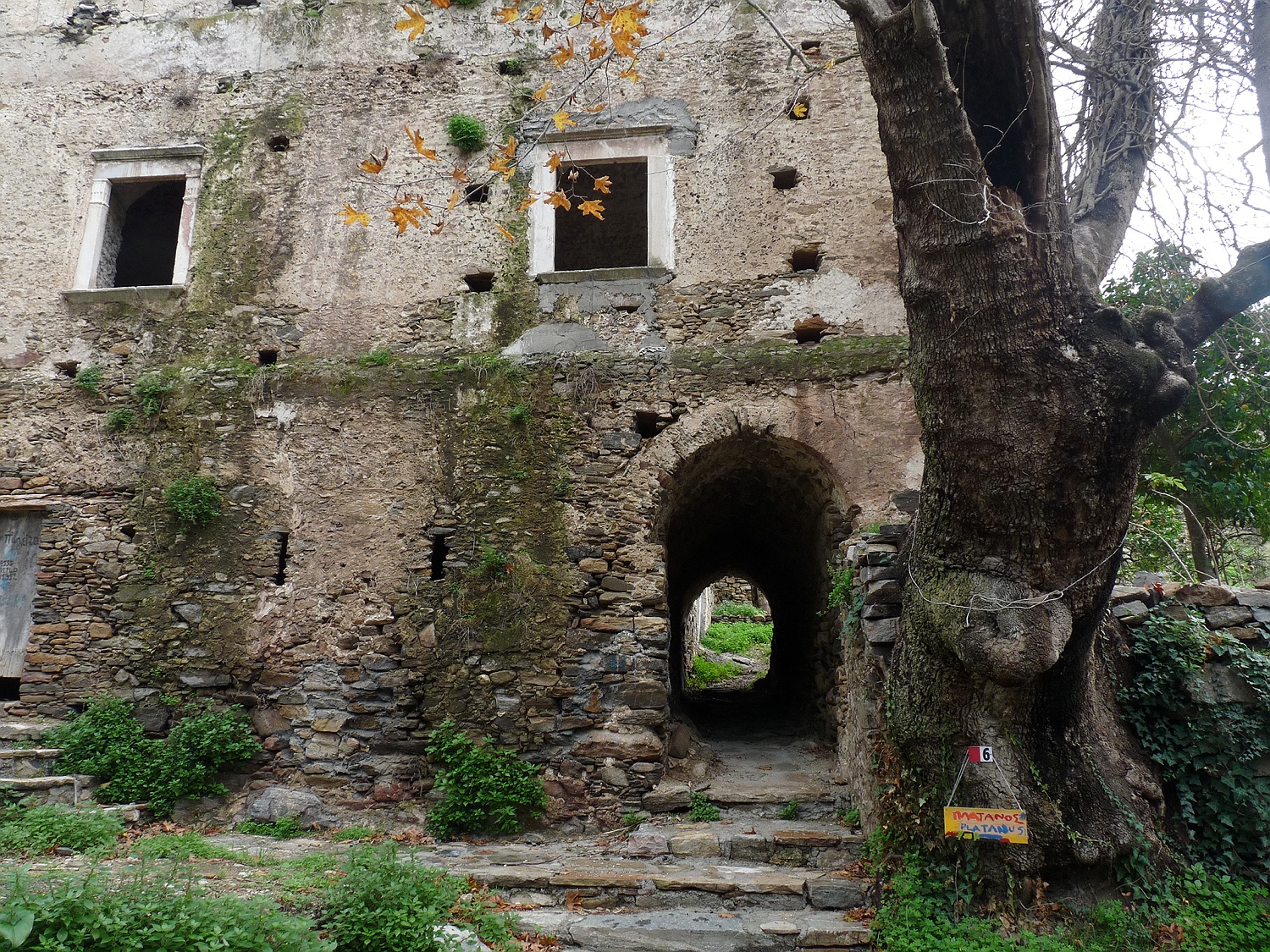 In this tower in the valley of Potamiá lived the family Kókkos.
In this tower in the valley of Potamiá lived the family Kókkos.
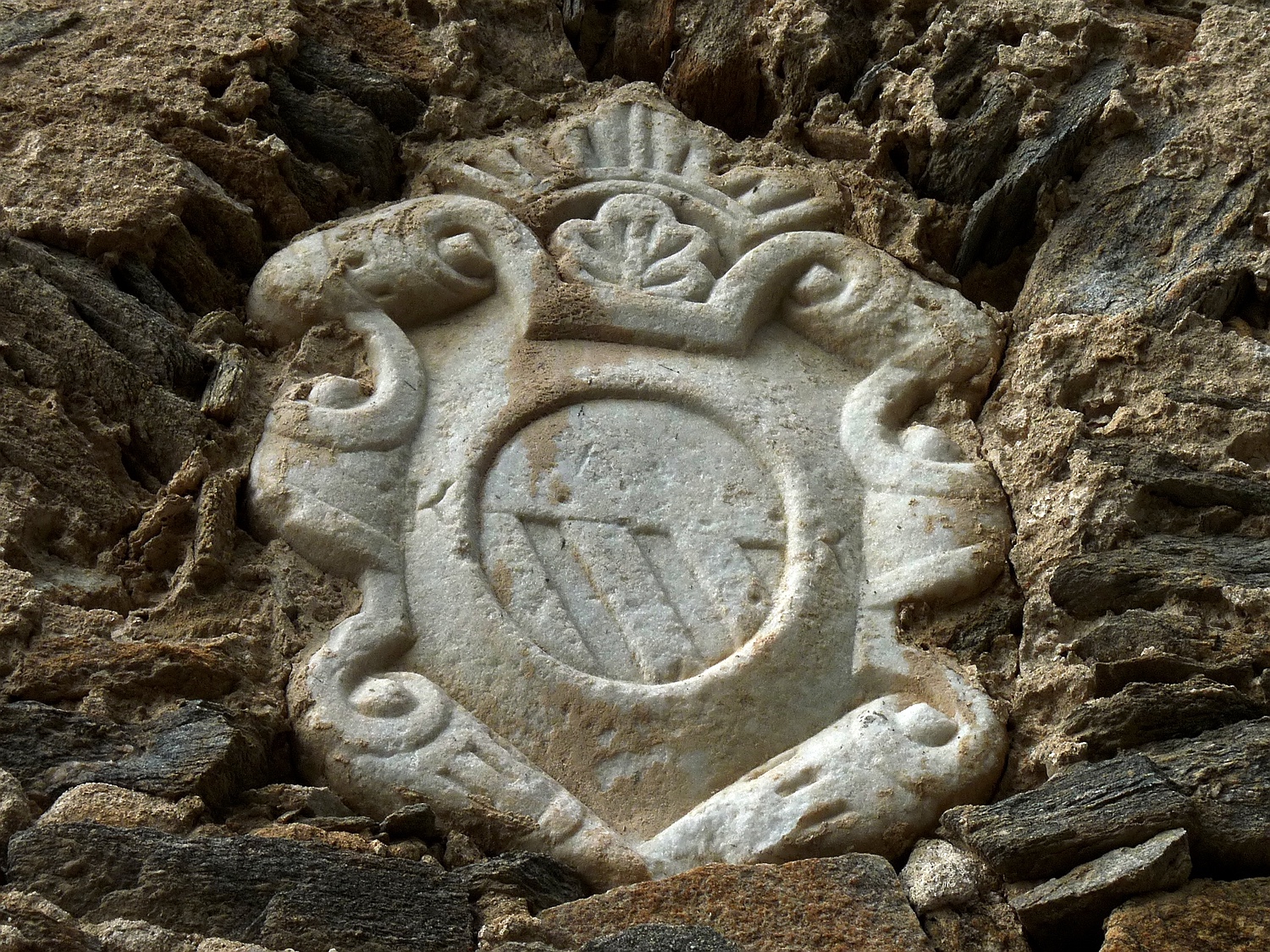 Here the coat of arms of Konstantínos Kókkos on the outer wall of the tower – his initial letters K and K are carved on the right and left.
Here the coat of arms of Konstantínos Kókkos on the outer wall of the tower – his initial letters K and K are carved on the right and left.
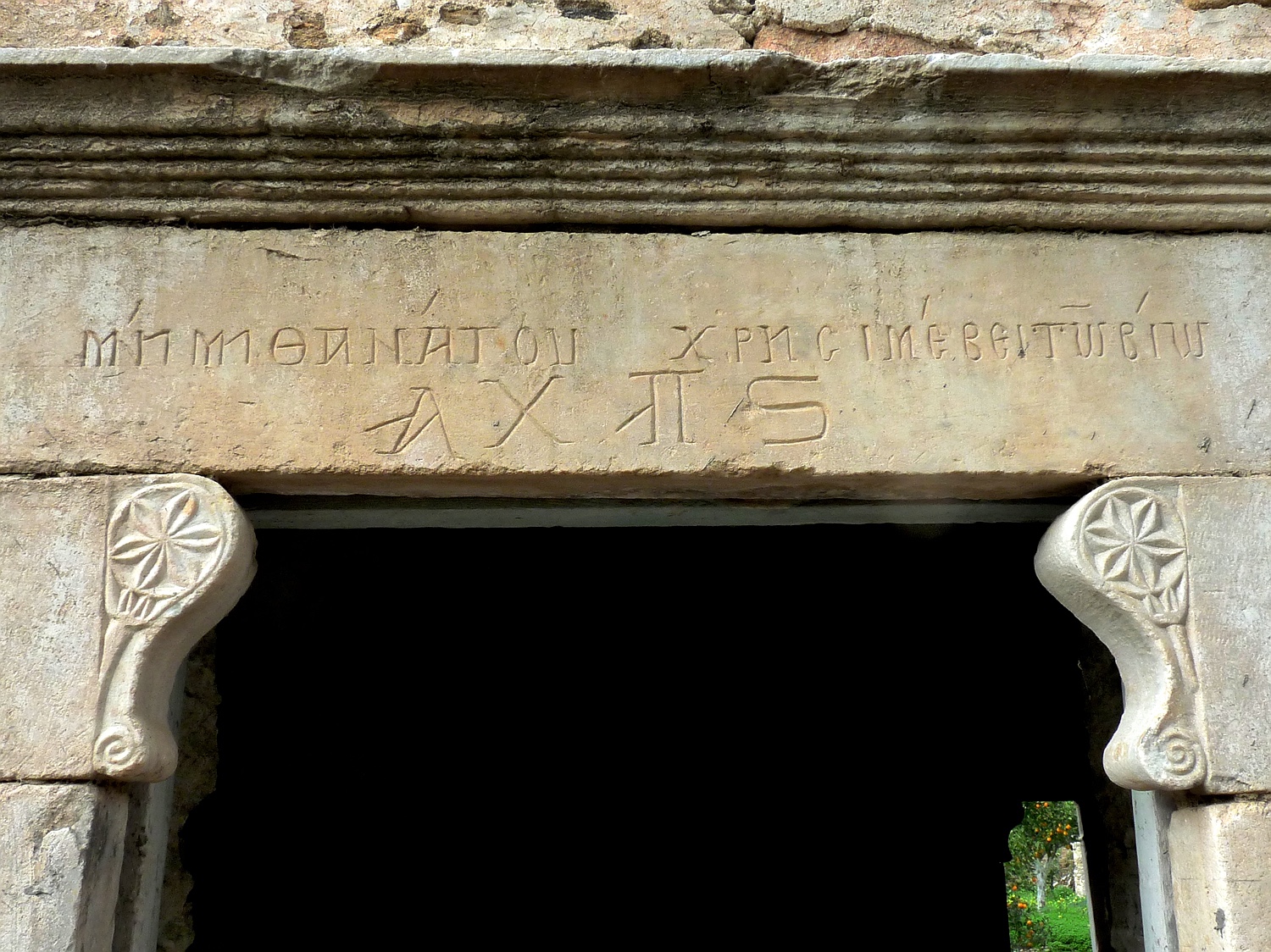 Above the door is written: “It is useful for life to remember death”. The letters underneath stand for the year 1686.”
Above the door is written: “It is useful for life to remember death”. The letters underneath stand for the year 1686.”
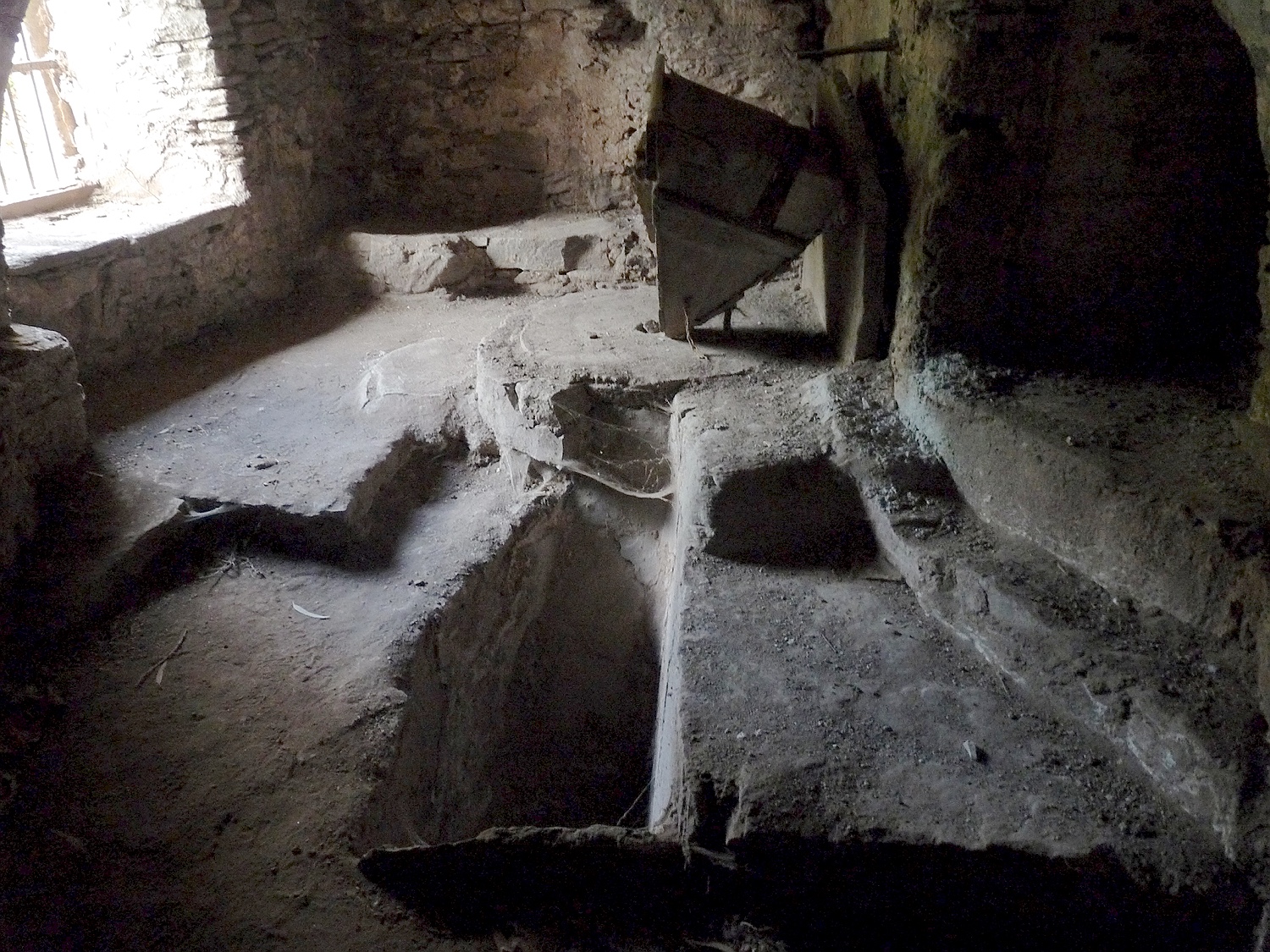 As in many Venetian towers, agricultural activities were carried out in the lower storeys: The cellar contains the remains of a water mill and an oil mill.
As in many Venetian towers, agricultural activities were carried out in the lower storeys: The cellar contains the remains of a water mill and an oil mill.
 This tower is still linked to the romantic love story of Tsabatís Barózzi and Annoúsa Kókkou, who married despite the fact that Annoúsa’s father was murdered by Tsabatís’ father.
This tower is still linked to the romantic love story of Tsabatís Barózzi and Annoúsa Kókkou, who married despite the fact that Annoúsa’s father was murdered by Tsabatís’ father.
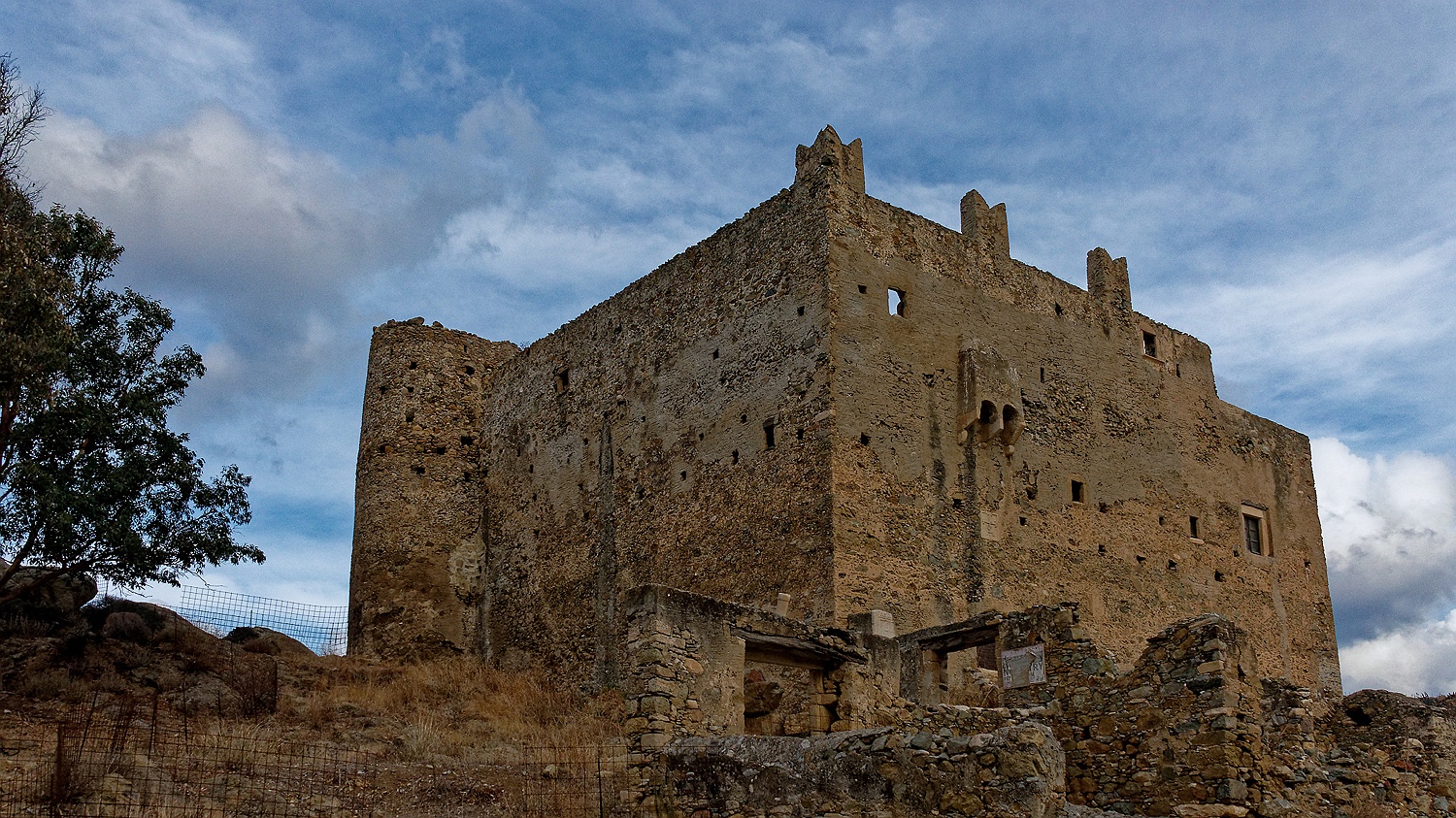 The Monastery Ypsilotéras near Galíni was built in 1600 by Konstantinos Kokkos. It was surrounded by a high defensive wall and was very well fortified. The monastery served the family as a fortress in the fight against the Catholic feudal lords and also as a refuge for the local farmers in the event of battles or pirate raids (photo by Dieter Linde).
The Monastery Ypsilotéras near Galíni was built in 1600 by Konstantinos Kokkos. It was surrounded by a high defensive wall and was very well fortified. The monastery served the family as a fortress in the fight against the Catholic feudal lords and also as a refuge for the local farmers in the event of battles or pirate raids (photo by Dieter Linde).
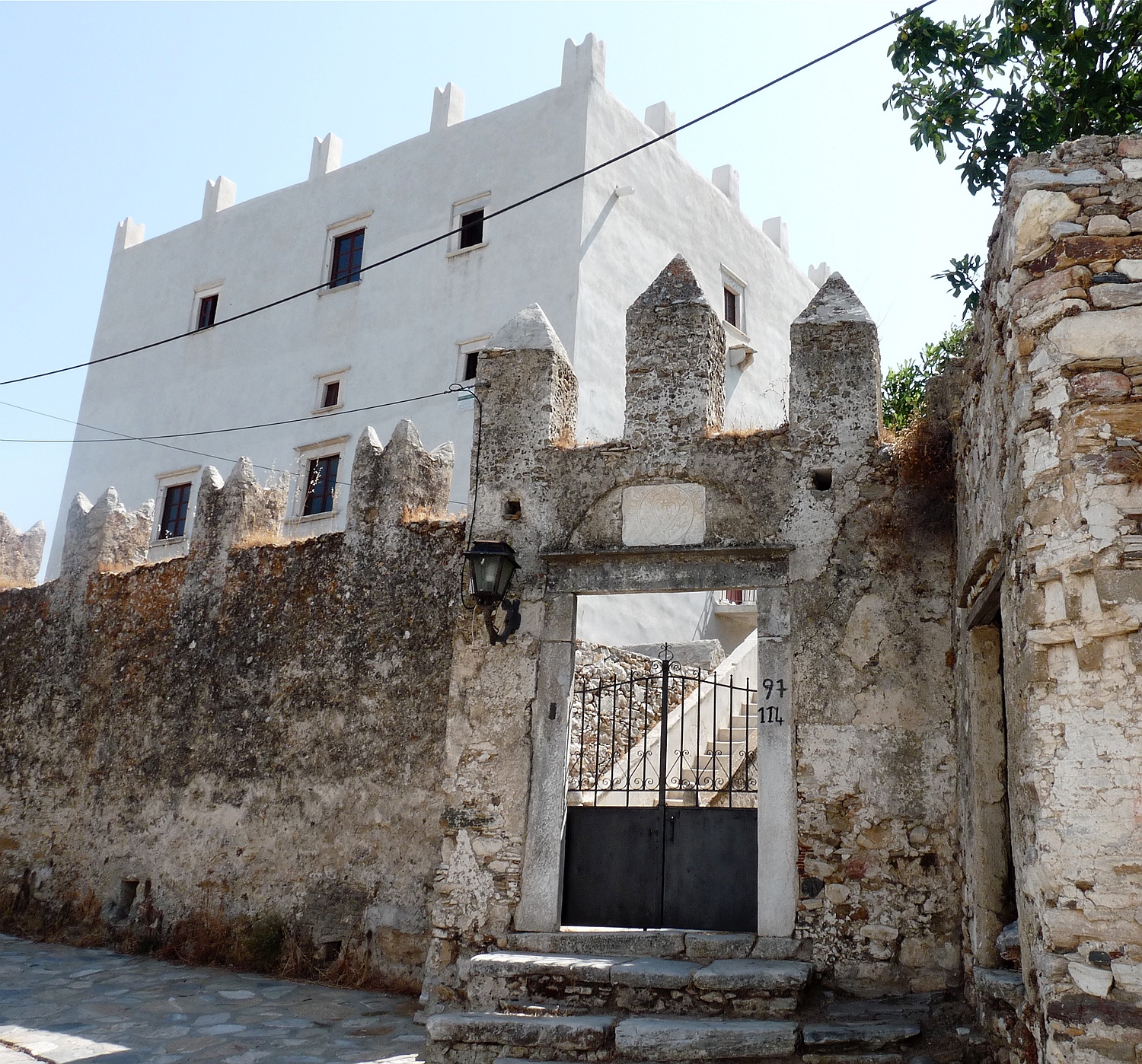 The family Barozzi lived in this tower in Chalkí; Tsabatís and Annoúsa lived here after their marriage. The people of Chalkí used to call the tower the “Tower of Annoúsa”.
The family Barozzi lived in this tower in Chalkí; Tsabatís and Annoúsa lived here after their marriage. The people of Chalkí used to call the tower the “Tower of Annoúsa”.

Coat of arms above the entrance to the tower: While the tower originally belonged to the Barozzi and the coat of arms of this family with the year 1742 is emblazoned above the entrance door to the tower itself, this coat of arms at the entrance to the courtyard belongs to the English consul G. Frangopoulos, who was in office on Naxos from 1816 and, according to the inscription, repaired the tower.
Other Venetian towers on Naxos
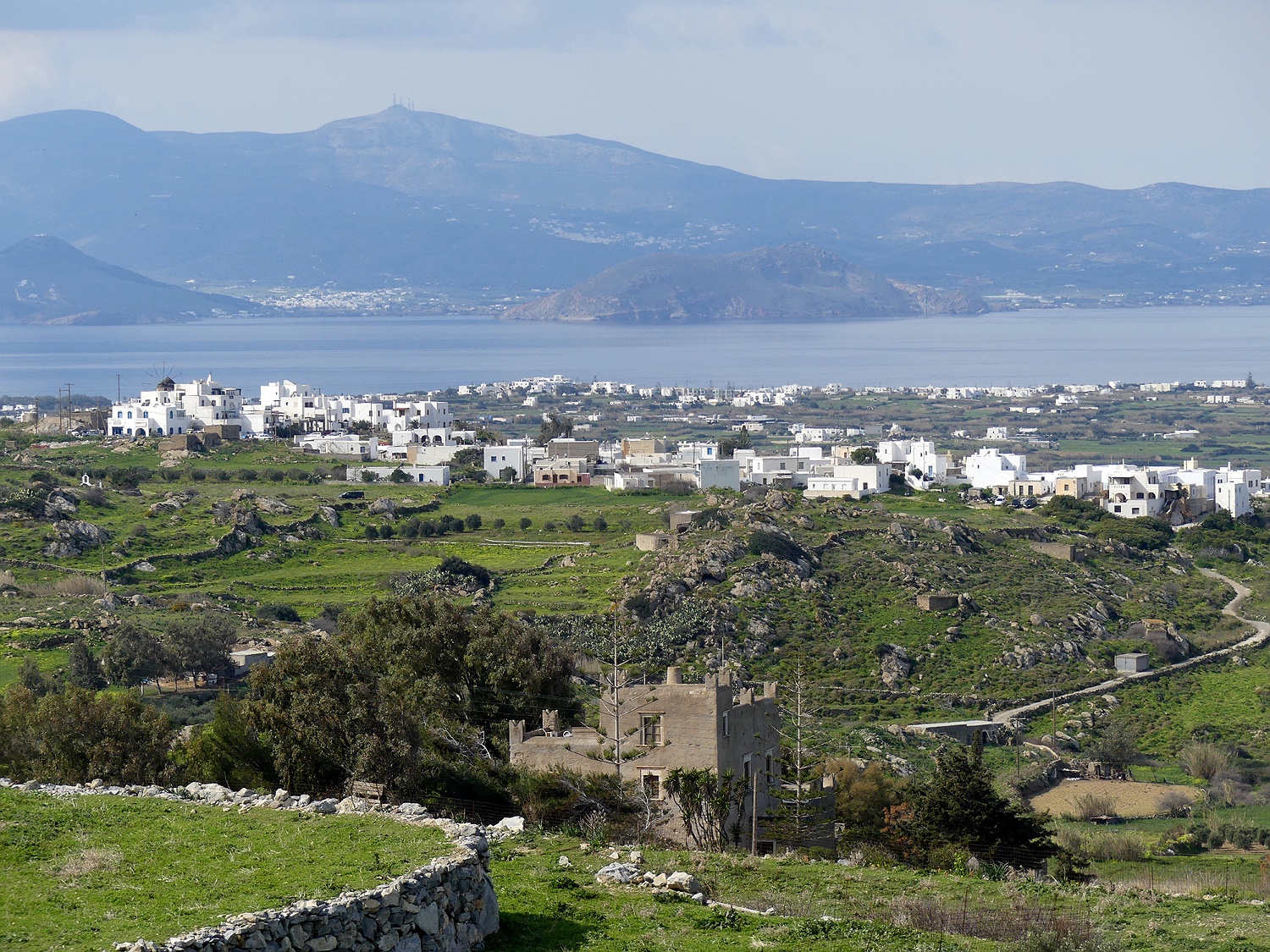 The tower Belónia near Galanádo is well preserved and still inhabited today.
The tower Belónia near Galanádo is well preserved and still inhabited today.
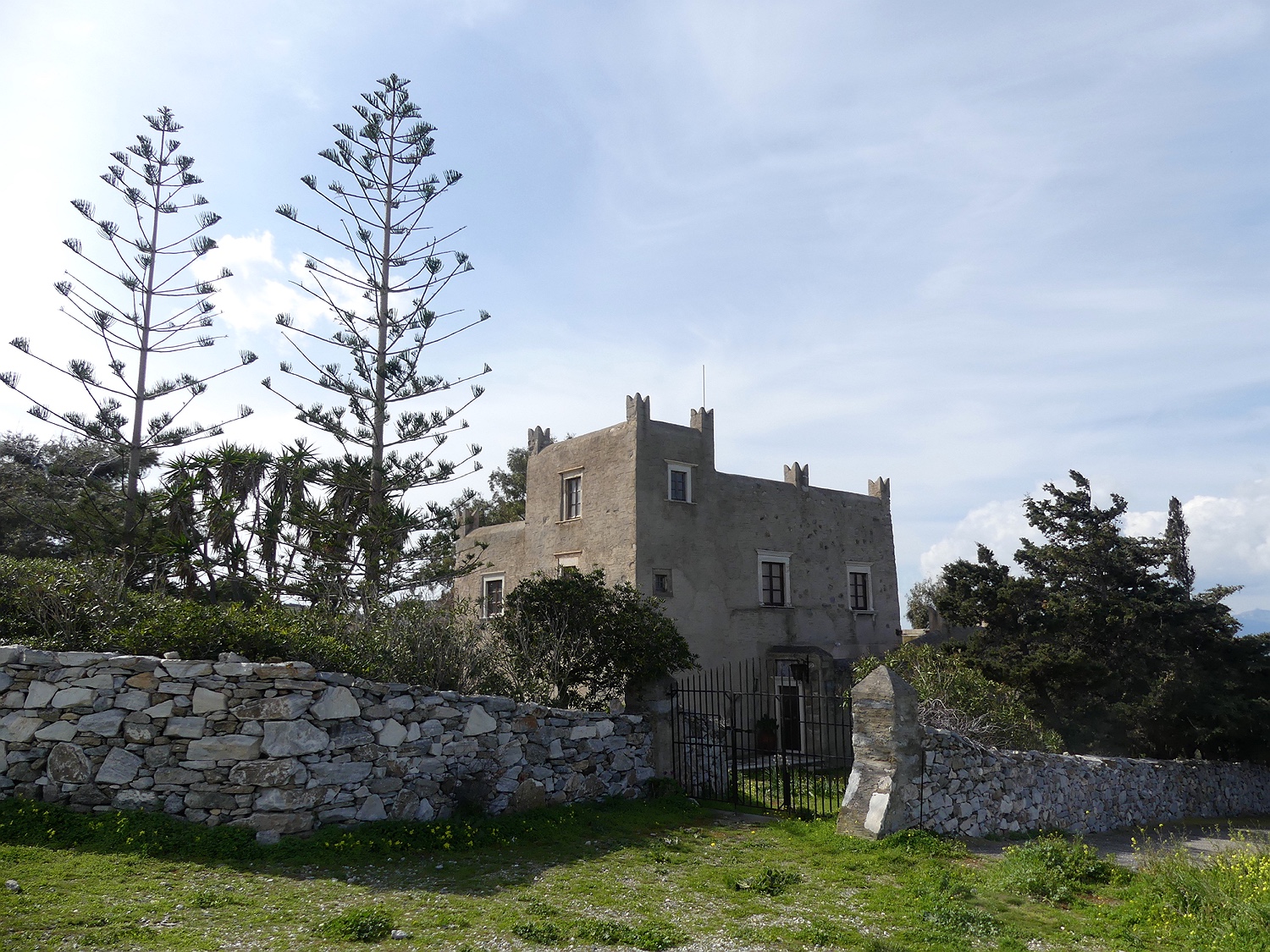 It dates back to the year 1610.
It dates back to the year 1610.

Above the village of Engarés lies another Venetian tower in the fertile river valley; the building that still exists today was built in 1787.

Above the door you can see the coat of arms of Andronikos Prantounas, who was Churchwarden of the Catholic Metropolis of Naxos and of the Monastery Chrysóstomos near the Chora.
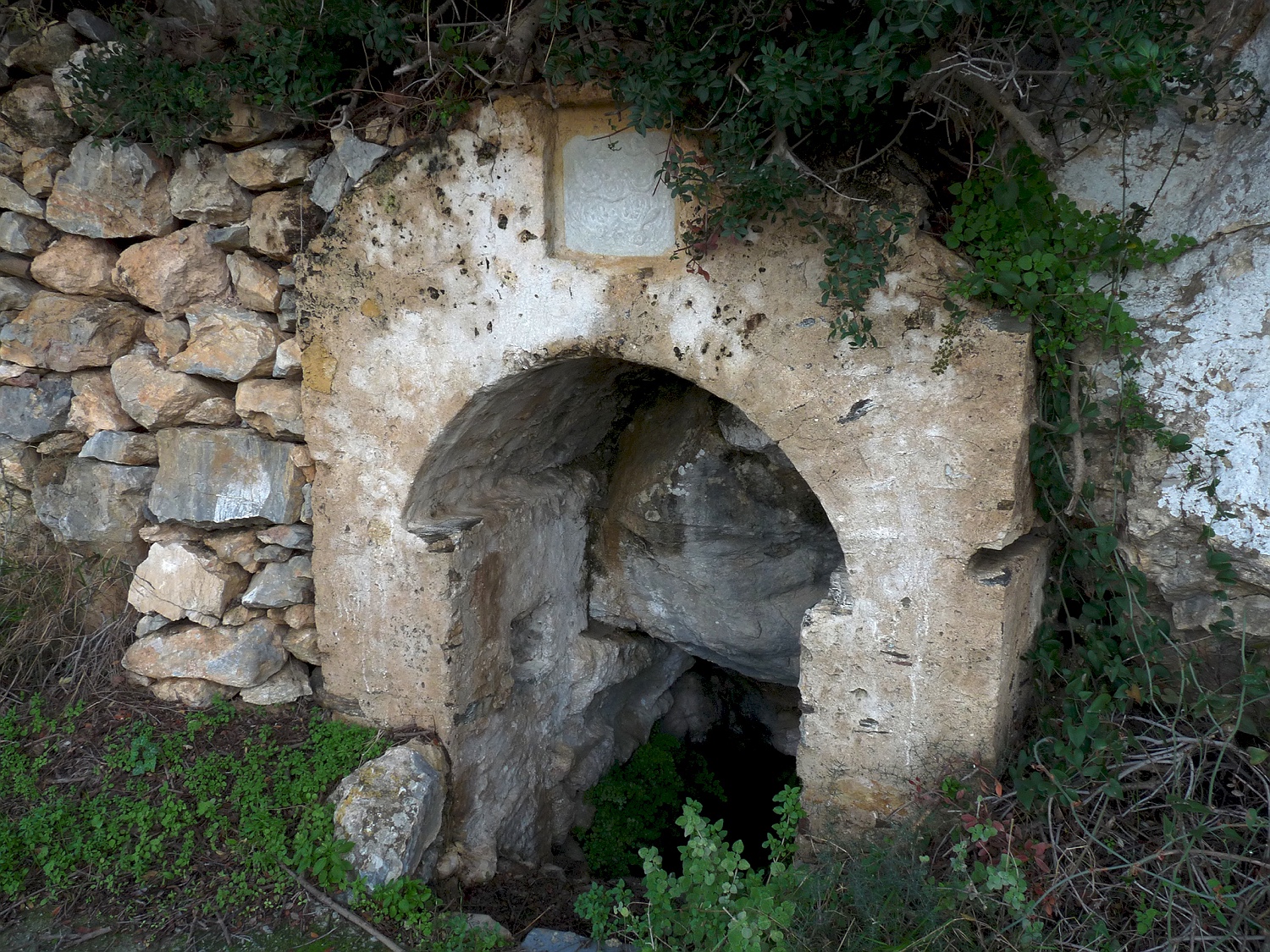
A walled well nearby dates from the same period.
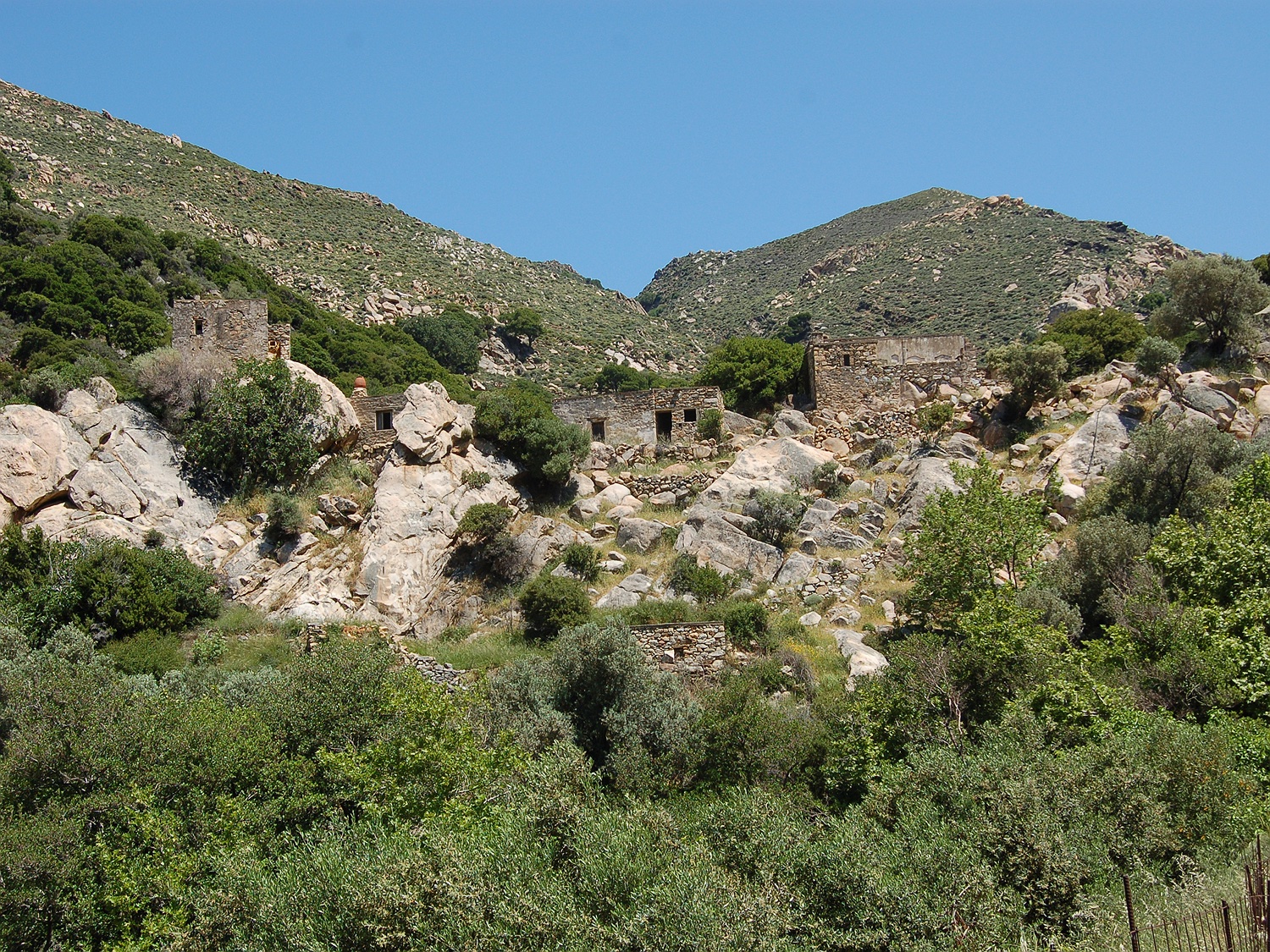
The tiny settlement of Skepóni in the north-west of the island was also a feudal seat.

Here you can see the small tower of Skepóni. It was probably built by Markos, the son of the Spaniard Francesco Coronello, who governed the island under Joseph Nasi in the last decades of the Duchy and whose family settled on the island.

In Filóti a rather small tower lies in the valley between the two halves of the village.
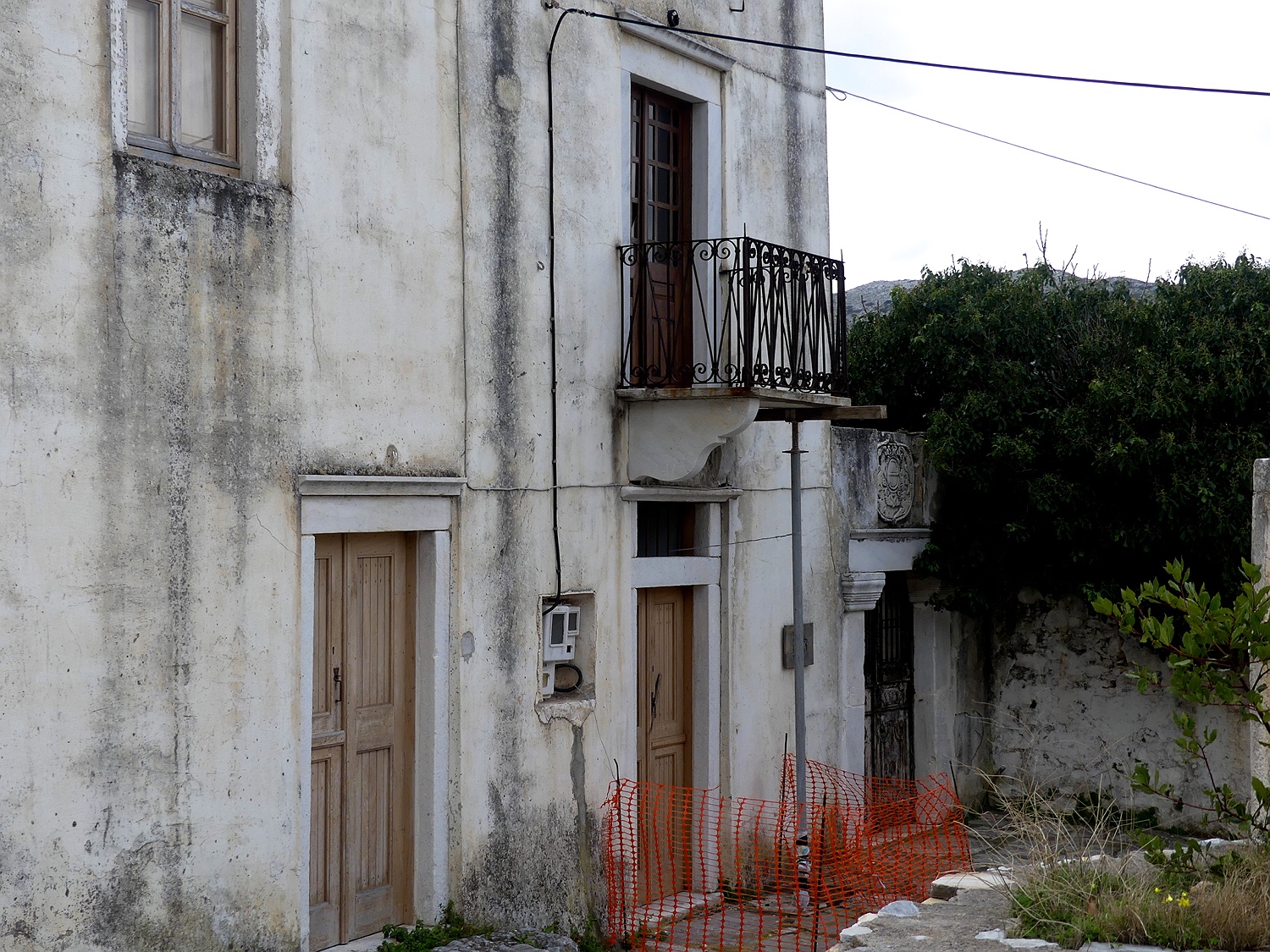
This tower belonged to the family Barozzi, who came from Venice first to Santorini and then settled on Crete. From there they came to Naxos at the end of the 15th century. As with all older fortified towers the upper storeys with the living quarters was only accessible via a steep staircase or wooden ladder to the door on the second floor (on today’s balcony).

The first member of the family of Barozzi to come to Naxos was Georgetto Barozzi, who died in 1619. He married a daughter of the Crispis, who brought the village of Filóti into the marriage as a feudal estate.

The coat of arms of “Geronimos Barozzi” with the year 1718 can still be seen above the gate to the garden.
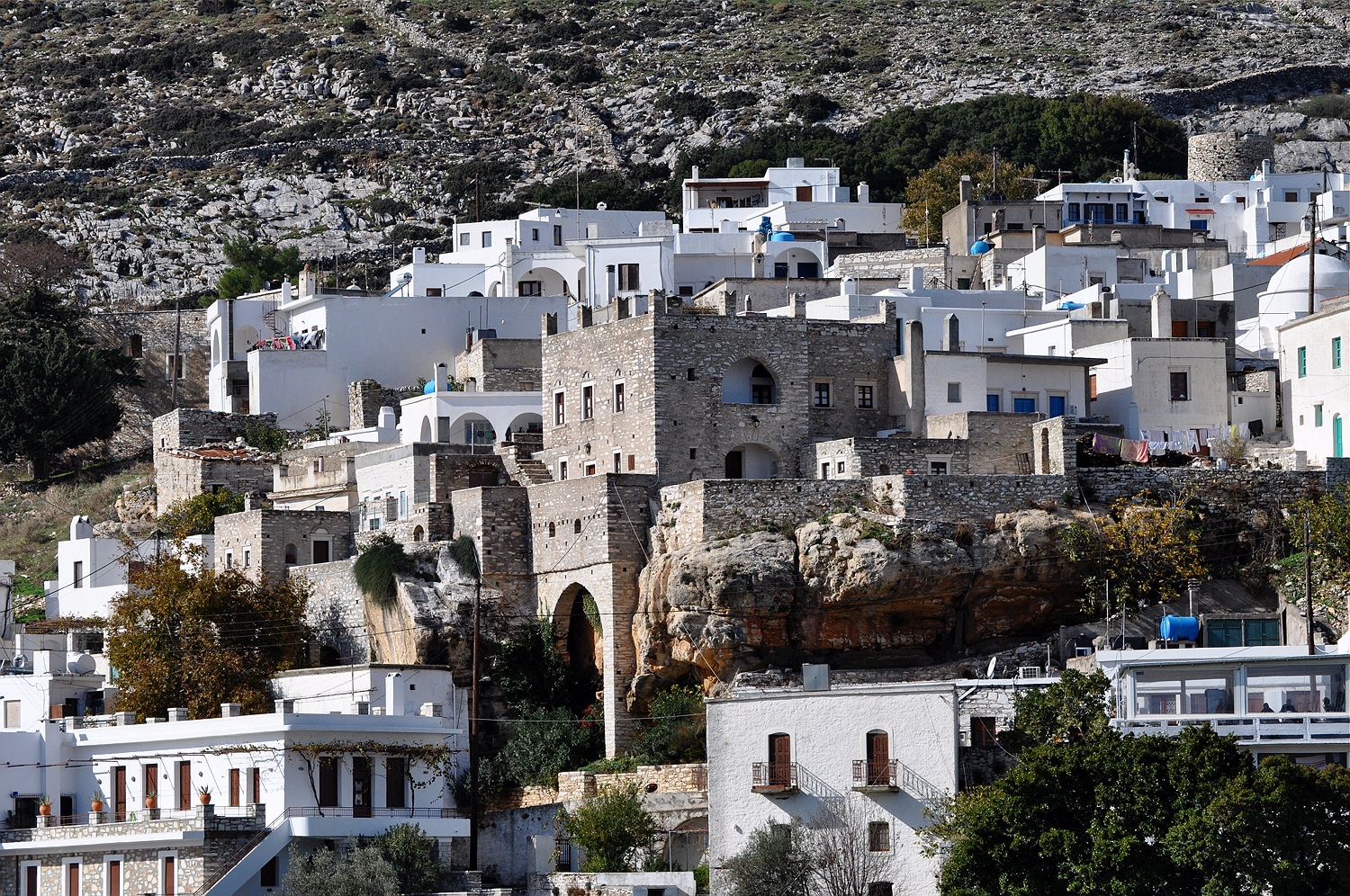
There are several Venetian towers in Apíranthos, the largest and best-preserved of which belongs to the Greek family Zevgólis, who still live in it.
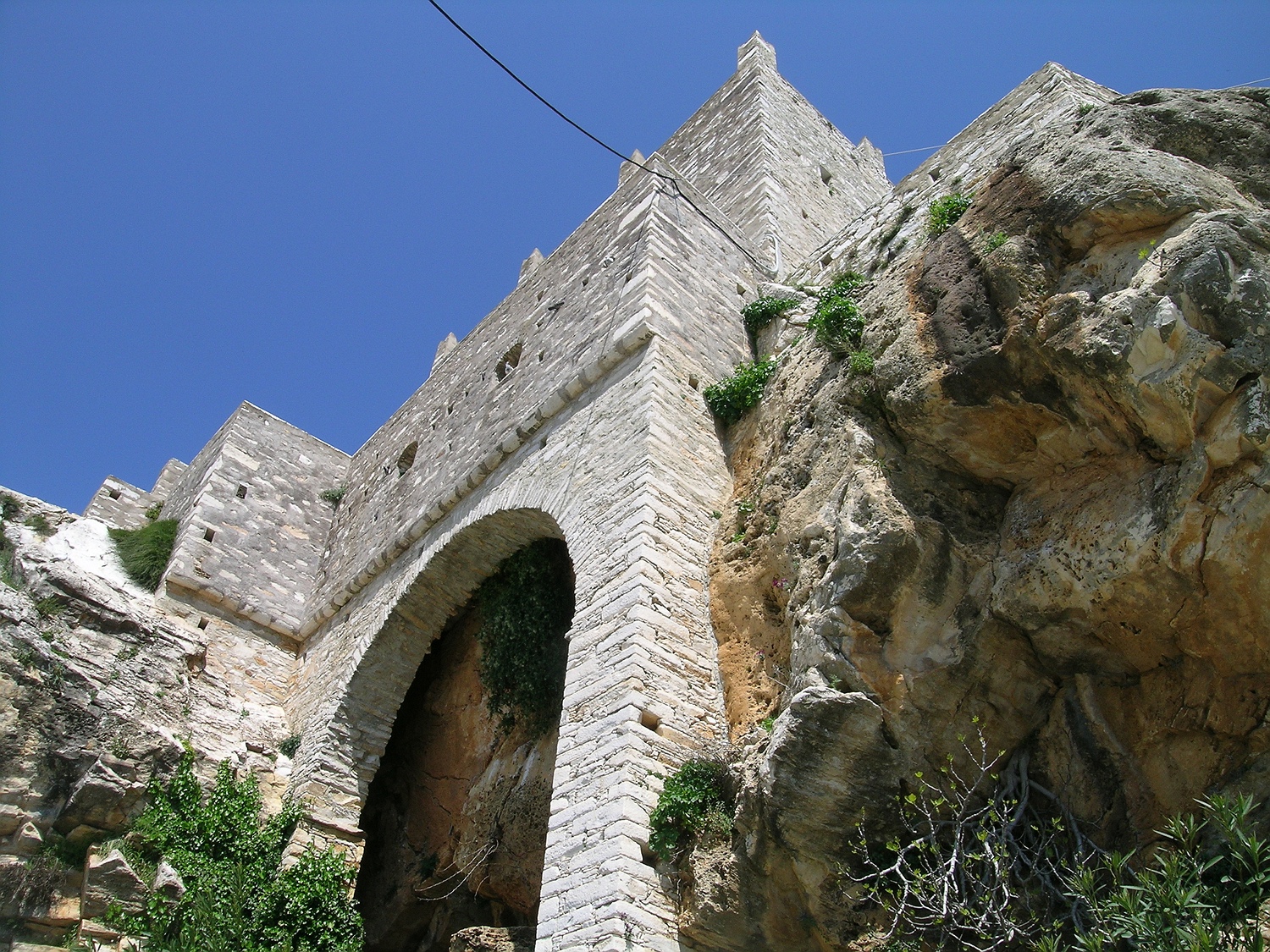
The tower is supported by an impressive arch. It dates back to the 17th century and was built by the family Kástri.
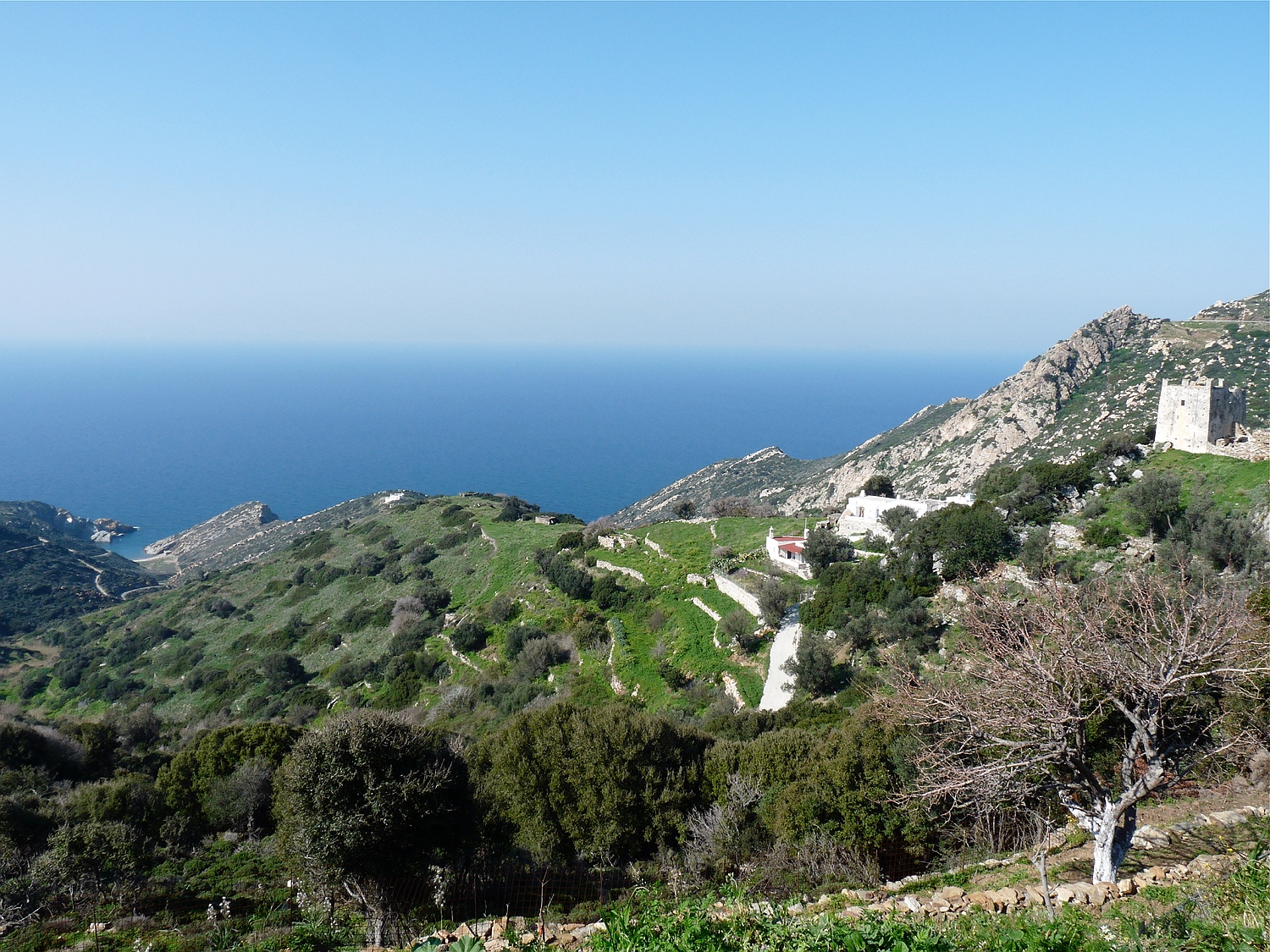
The Venetian tower of Agiá is located in an area in north-west Naxos that is barely populated today, at an altitude of around 200 metres above sea level on a small ridge above a fertile valley. It is one of only two towers on the island that are visible from the sea. It probably originally belonged to the family of Kokkos. It was inhabited until 1992, when it burnt down and was largely destroyed.

Like most Venetian defence towers on Naxos, it has a square floor plan and three storeys. Only the top floor has windows; the lower floors only have narrow embrasures. The turrets on the roof are typical of Venetian towers.
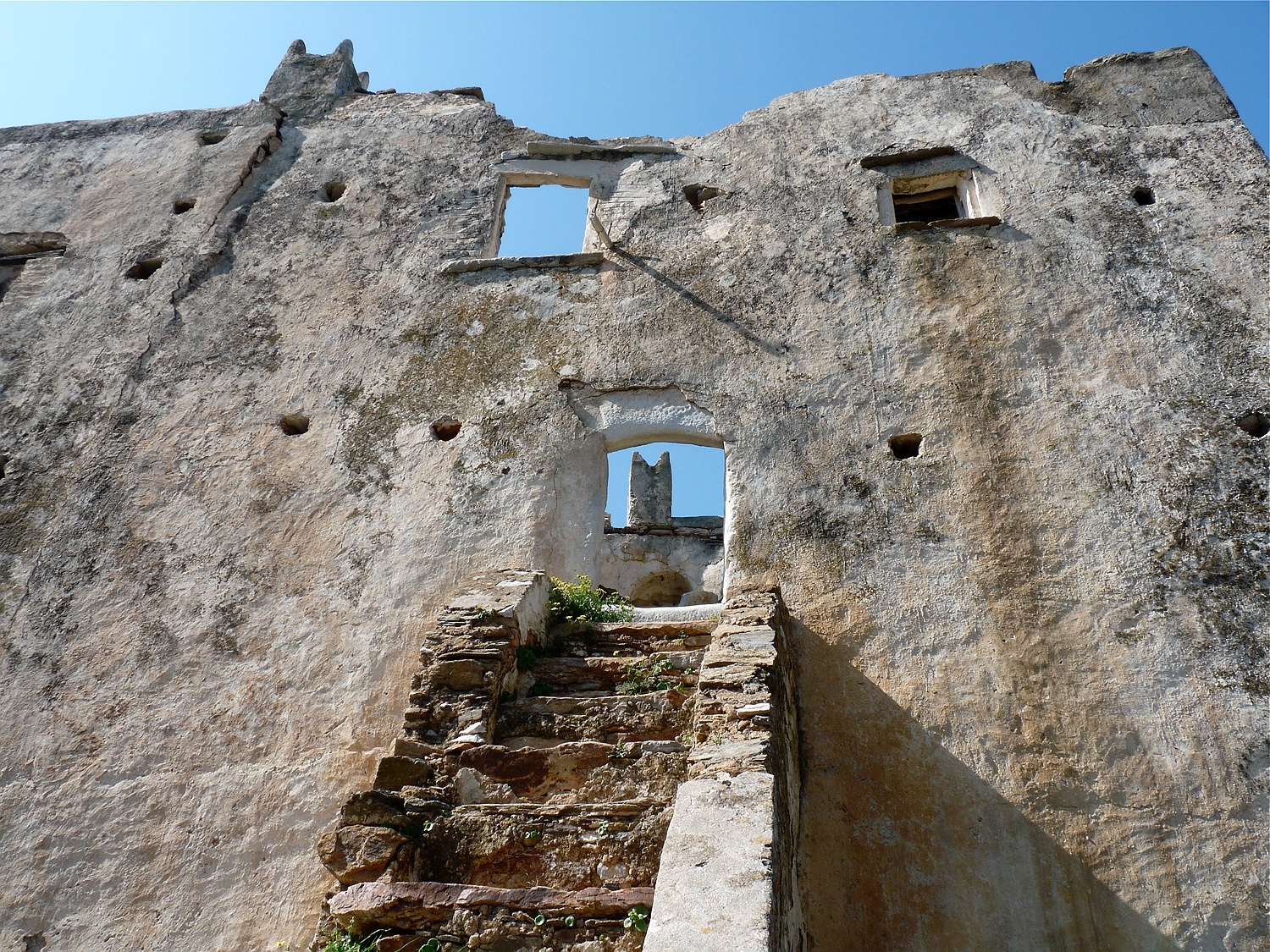
The very low entrance to the tower lies on the first floor and can only be reached via a steep staircase.
In addition to the Venetian towers, a few towers on Naxos were also built by the Greeks, in particular the two towers of Márkos Polítis in Keramí and Akadími. Márkos Polítis was the leader of the Greek resistance against both the Venetians and the Turks; he worked together with other leaders of the struggle for independence and some church dignitaries for the founding of the first Orthodox school on Naxos – which operated disguised as a church for some decades. Márkos Polítis was eventually executed by the Turks.

The large tower of Márkos Polítis in Akadími is one of the few fortified towers built by Greeks.
continue: The Venetian tower and monastery of Agia
back: Fortresses and towers
see also:
- The history of Naxos
- Naxos under the Venetians
- Naxos under Ottoman rule
- The sights and monuments of Naxos
- Agios Artemios near Kinidaros
further reading:
- Kastra.eu: The tower in Kourounochóri (in Greek)
- OreinosAxotis: The history of the tower of the family Kókkoi in Potamiá and of Tsabatís Barózzi and Annoúsa Kókkou (in Greek)
- Οι Πύργοι και οι Οχυφωμένες Κατοικίες των Νησιών του Αιγαίου και της Πελοπόννησου (14ος με 19ος Αιώνας) – Μια Ιστορικοπολιτισμική Προσέγγιση με Έμφαση στην Περίπτωση της Νάξου
used literature: “Η Ιερά Μονή Παναγίας της Υψιλοτέρας εις Εγκαρές Νάξου”, Νίκος Κεφαλληνιάδης, Ναξιακή Πρόοδος, 1966
provided by Mr Chr. Ucke, to whom we would like to express our sincere thanks